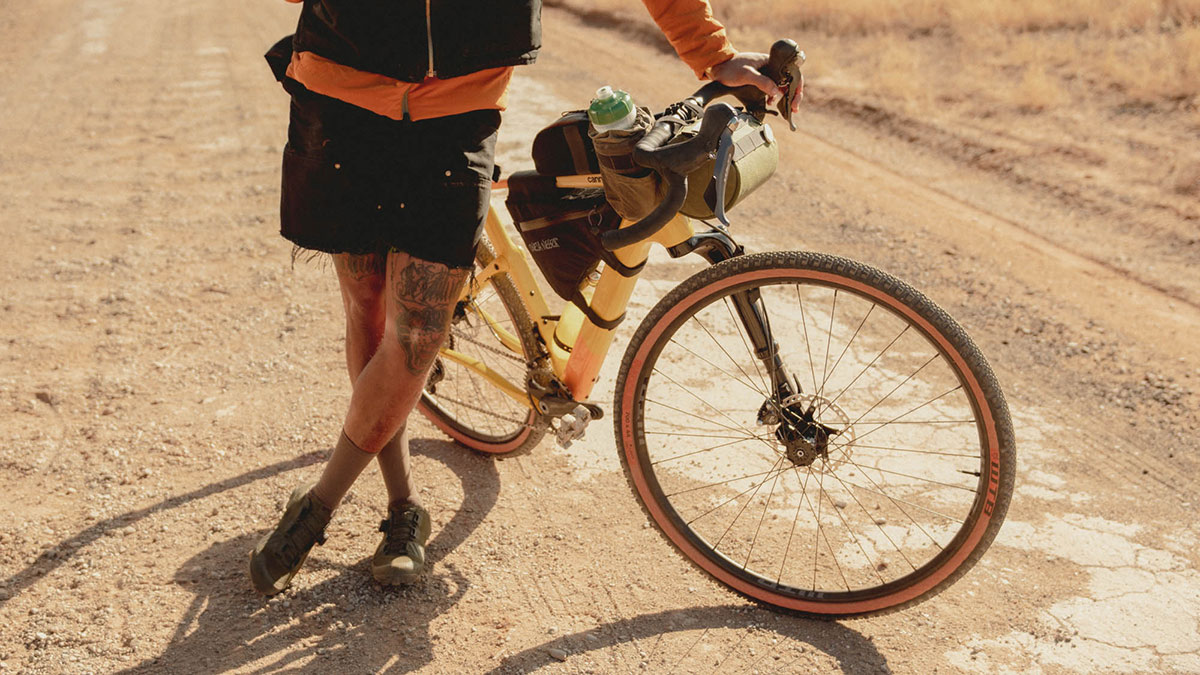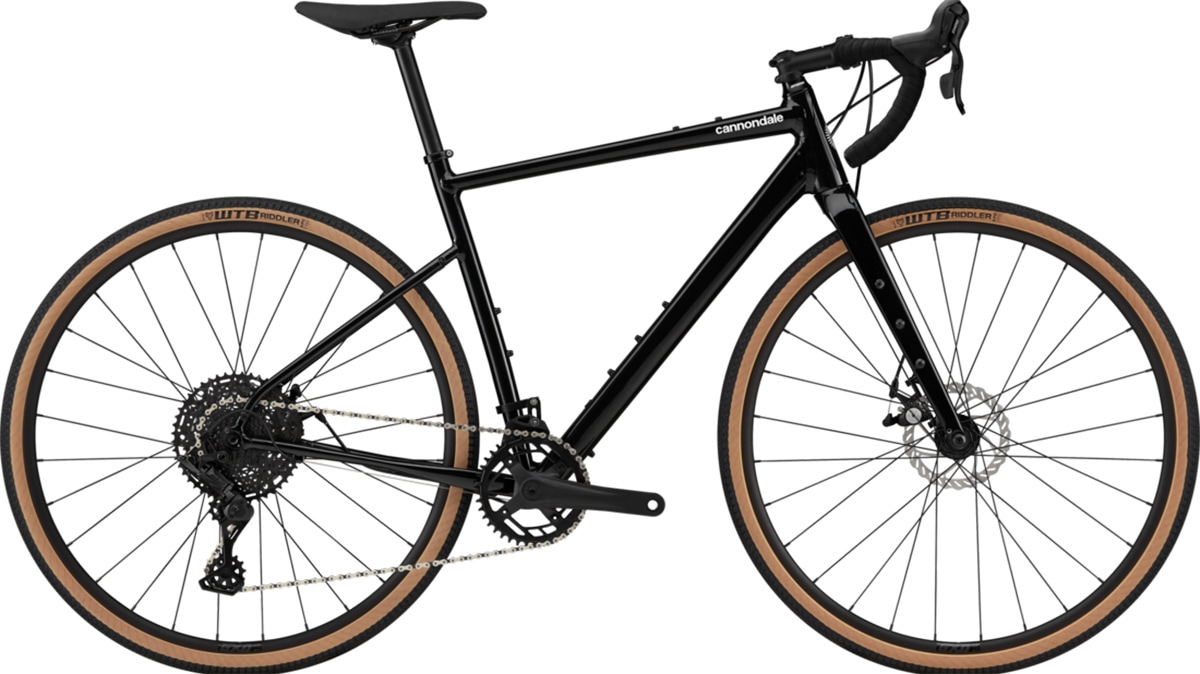Once upon a time, I was a card-carrying road biker with deeply etched tan lines cutting across my quads and more spandex than a ballet recital. One August morning I even hopped on my road bike in Boulder, Colorado, and cycled 3,893 miles across the country until my skinny tires touched the ocean outside of Miami a few months later. But as I neared the ripe ol’ age of 30, I began racking up bike-car altercations. Eventually, the juice wasn’t worth the squeeze anymore. I switched gears to mountain biking.
I blazed through my 30s on fatter tires, appreciating the softness of the dirt but missing the out-the-door ease of road biking. It wasn’t until I was sidelined with knee surgery in 2018 that I first discovered gravel biking. Arguably the most versatile set of wheels out there, gravel bikes typically look like road bikes with drop bars—those lower-and-curled handlebars. They also have wider tires than road bikes and a broader range of gears to handle varied terrain. In short, gravel bikes can handle a multitude of adventures whether on forest roads, fire roads or off-trail routes. Think of them as the quintessential adventure bikes. (Learn more on how to choose a gravel bike.)
Still, I wasn’t convinced that a gravel bike could entice me back from the singletrack—until I tested a few options from the Cannondale Topstone line.
Cannondale launched the Topstone bike in 2018, but the series has grown to include nine models. There are four Topstone Alloy (1-4) models and five Topstone Carbon models. There’s also an electric version, the Topstone Neo 5 that provides pedal assist up to 28 mph. So cyclists are sure to find a ride that best suits their needs and price point.
Cannondale Topstone Carbon

Higher-end models like the new Topstone Carbon 2 L are kitted out with the Shimano GRX 800 groupset including a 2×11 drivetrain and GRX 800 hydraulic brakes, which is the top-of-the-line in this Shimano grouping. Groupsets include the drivetrain, shifters and brakes (otherwise known as the components), that make your bike go and stop. And “2×11” means two rings in the front and 11 in the rear.
The Carbon 2 L also comes with SmartSense, a digital system of lights and radar designed to make you more visible on the road by changing blink patterns and brightness and even responding when you are braking. (The rear-facing radar is optional on this model.)
However, the highlight of the Carbon 2 L is the Kingpin, an innovative rear suspension that helps absorb bumps and vibrations. The Kingpin adds upwards of 30mm of travel with a thru-axle pivot in the seat tube that better allows the bike’s carbon frame to flex like a leaf spring when it encounters rough terrain—and with no real additional weight.
It’s a hard-charging bike that rides well for cyclists hoping to tackle forest roads and fire roads with occasional pavement. But for those who want less bike at a lower cost, Cannondale also has the Topstone Alloy series.
Cannondale Topstone 4

I got the chance to test out the Cannondale Topstone 4, the most affordable bike in the Topstone lineup. Unlike the Topstones in the carbon series, the alloy bikes don’t have the Kingpin suspension. Did this affect the terrain choices I made? Of course it did, but more on that below.
The Topstone 4 comes with a microSHIFT Advent X groupset with a 1×10 drivetrain. This is a lesser-known and more-affordable groupset than the Shimano GRX used in the carbon bike above, but it brought me nothing but joy. It is the brand’s lightest setup, but I mainly appreciated its minimalism. Nothing about the Advent X is complicated. Shifting felt reliable and trustworthy. Sure, it wasn’t as snappy or sharp during the gear transitions as the shifting on the higher-end bike. Still, I’d wager that’s a tradeoff that most entry-level cyclists are willing to make.
Alloy bike frames are incredibly rigid, and the SmartForm C2 Alloy frame is no exception. But it’s paired here with a full carbon front fork that dampened the vibrations whenever I ventured off-road. That fork was just enough carbon to allow me to cruise up (and down) a 10-mile county road in my neighborhood without my front teeth rattling. I’ll count it as a win.
Most riders consider a gravel bike because they want to get off the pavement, and the Topstone 4 is largely equipped for off-road capabilities. It doesn’t handle bumpy terrain as well as its higher-priced counterparts with the Kingpin suspension. But it does come with 37mm tires with room to swap out for wider 40mm tires. The frame has three mounts for water bottles. And Cannondale built the bike so it’s ready for you to install a dropper post (which allows you to quickly adjust your saddle height with a lever while on the bike).
The Topstone 4 is a versatile gravel bike but it’s not perfect. It comes with mechanical disc brakes which will always lose to hydraulic disc brakes in a head-to-head battle. Not only are hydraulic brakes more powerful, but they offer better control and weigh less than mechanical disc brakes. On steeper descents, I did notice a grainier feel in the brakes and had to work a bit more to get the same performance. But again, this is one of the concessions to keep the price point as low as it is. Personally, I still think the Topstone 4 is a great deal for the price.
Who is the Cannondale Topstone 4 best for?
I highly recommend the Topstone 4 for any cyclist who wants to dip their toe into gravel biking. The entry-level price point makes it more approachable. It also comes with enough features that make it off-road ready when you decide to turn from the pavement to the dirt. Even if you don’t take to the forest, I still think the Topstone 4 is a great pick for urban commuters or riders looking for a high-quality bike to help them get outside and stay active.
If you’re an experienced cyclist with higher performance expectations and/or who plans on tackling burlier terrain, I’d recommend the Topstone Carbon 2 L or the Topstone Carbon 3 L.
